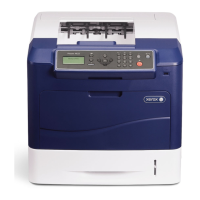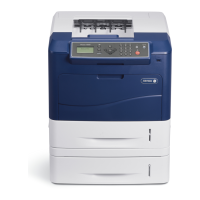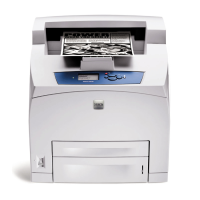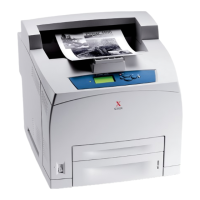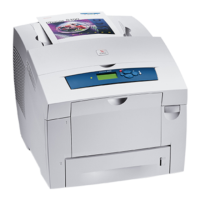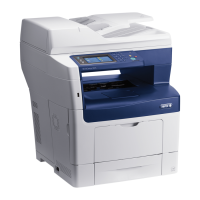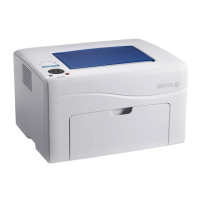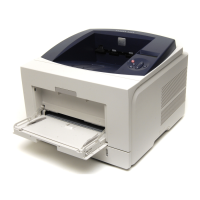5/2011
6-12
Phaser 4600/4620 Printer Service Manual
GP 10
Revision - Xerox Internal Use Only
General Procedures/Information
GP 10 How to Check a Motor
This procedure describes how to check a motor:
Initial Actions
WARNING
Switch off the electricity to the machine. Disconnect the power cord from the customer
supply while performing tasks that do not need electricity. Electricity can cause death or
injury. Moving parts can cause injury.
1. Check that the motor is free to rotate.
2. Check that all the motors mechanisms are clean, free to move and lubricated correctly.
3. Enter the component control code for the motor, refer to dC330. Run the motor for 30 sec-
onds, if the motor shows signs of or can be heard to slow down, the motor is defective.
Replace the motor.
4. Perform the appropriate procedure:
• Two Wire DC Motor
• DC Motor with Integral Encoder
• Four Wire Stepper Motor
NOTE: The voltages, PJ numbers, pin numbers and PWB names shown are an example only.
Go to the wiring diagram associated with the RAP for the correct information.
Two Wire DC Motor
NOTE: In cases where the motor may be driven forward or backward, the same two feed wires
are used, but the voltages on them are reversed, to reverse the motor direction. Such motors
may have two component control codes, for forward and reverse. A typical application is a tray
lift motor with a tray-up and a tray-down direction
1. Check the drive voltage when the component control code for the motor is entered. If the
drive voltage is measured, install a new motor. If the drive voltage is not measured, con-
tinue to the next step.
2. Check that the drive voltage can be measured on the PWB when the component control
code for the motor forward is entered. If no drive voltage is measured, check the power to
the PWB. If the power is good install a new PWB. If the drive voltage is measured at the
PWB, check the wiring to the motor. Repair or install new wiring.
DC Motor with integral Encoder
NOTE: This type of motor has the normal drive voltages for a DC motor, plus the +3.3V and 0V
lines for the encoder. The encoder has two outputs, A and B, producing pulses when the motor
is on. When the motor is running in one direction, the encoder A pulses lead the encoder B
pulses. In the other direction, encoder B pulses lead encoder A pulses. In this way the control-
ler can detect that the motor is running in the correct direction.
Check the operation of the motor as follows:
1. Check the drive voltage when the component control code for the motor is entered. If the
drive voltage is present at the motor, install a new motor. If the drive voltage is not
present, go to step 2.
2. Check that the drive voltage at the driver PWB when the component control code for the
motor is entered. If the drive voltage is present, check the wiring and connectors to the
motor. If the drive voltage is not present, check the power to the driver PWB. If the power
to the PWB is good, install a new driver PWB.
NOTE: When checking for pulses, use a standard digital multimeter. Using the DC volts range,
or the AC volts range, expect to obtain a reading greater than 1V and less than 4 volts, while
the motor is running. The actual value depends on the meter’s reaction to square waves and to
the particular frequency of the pulses. It is common to obtain a reading of 2 to 3 volts. If the
meter has a minimum and maximum recording facility, expect a maximum value of around +4.9
volts DC, and a minimum value of around +0.2 volts DC
Check the operation of the encoder as follows:
Check for pulses when the motor is running. If pulses are present, check the driver PWB. If
pulses are not present at the motor, check the wiring to the motor and repair to install new wir-
ing. If pulses are present, install a new driver PWB.
Four Wire Stepper Motor
NOTE: A stepper motor with an internal open circuit may appear to be fully functional under
dC330 component control. However, under normal operation it will run with intermittent failure.
Use the multimeter to check stepper motor coil resistance is similar.
1. Refer to Figure 1. Disconnect PJ23. Check the +24V supply and the phase pulses to
GND when the component control code for the motor is entered. If the supply and pulses
are present, install a new motor.
2. Check the connectors and wiring to the motor. Repair or install new wiring, as necessary.
3. Disconnect CN1. Check the +24V. If +24V is not present, check the power to the PWB. If
the power is good, install a new PWB. Check the phase pulses at the PWB. If the phase
pulses are not present at the PWB, install a new PWB
Figure 1 Example Motor Wiring Diagram
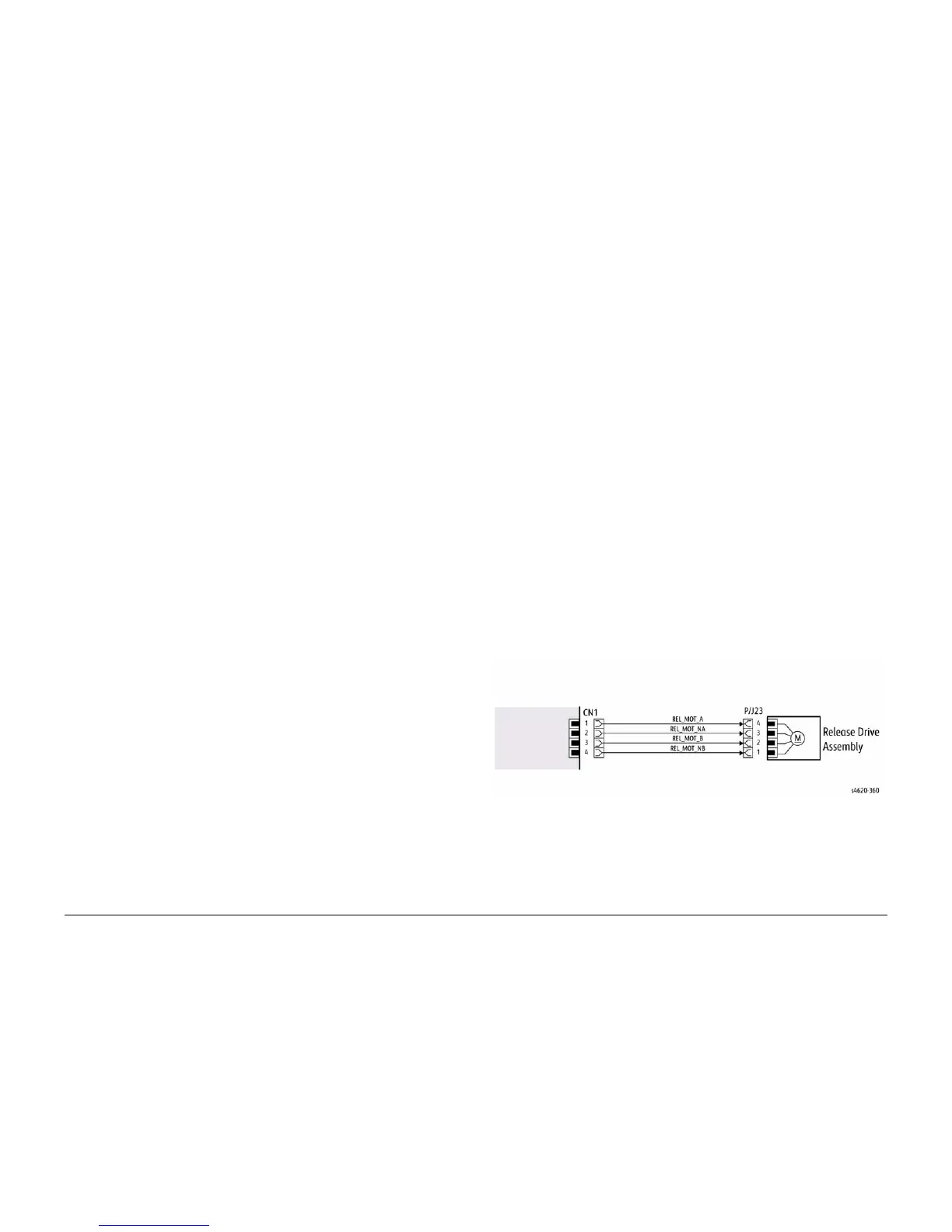